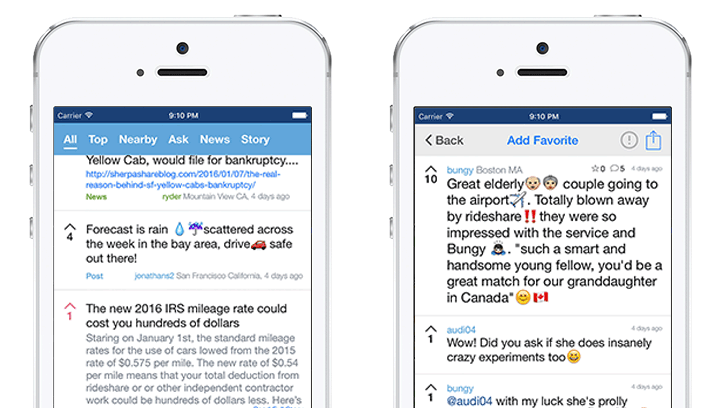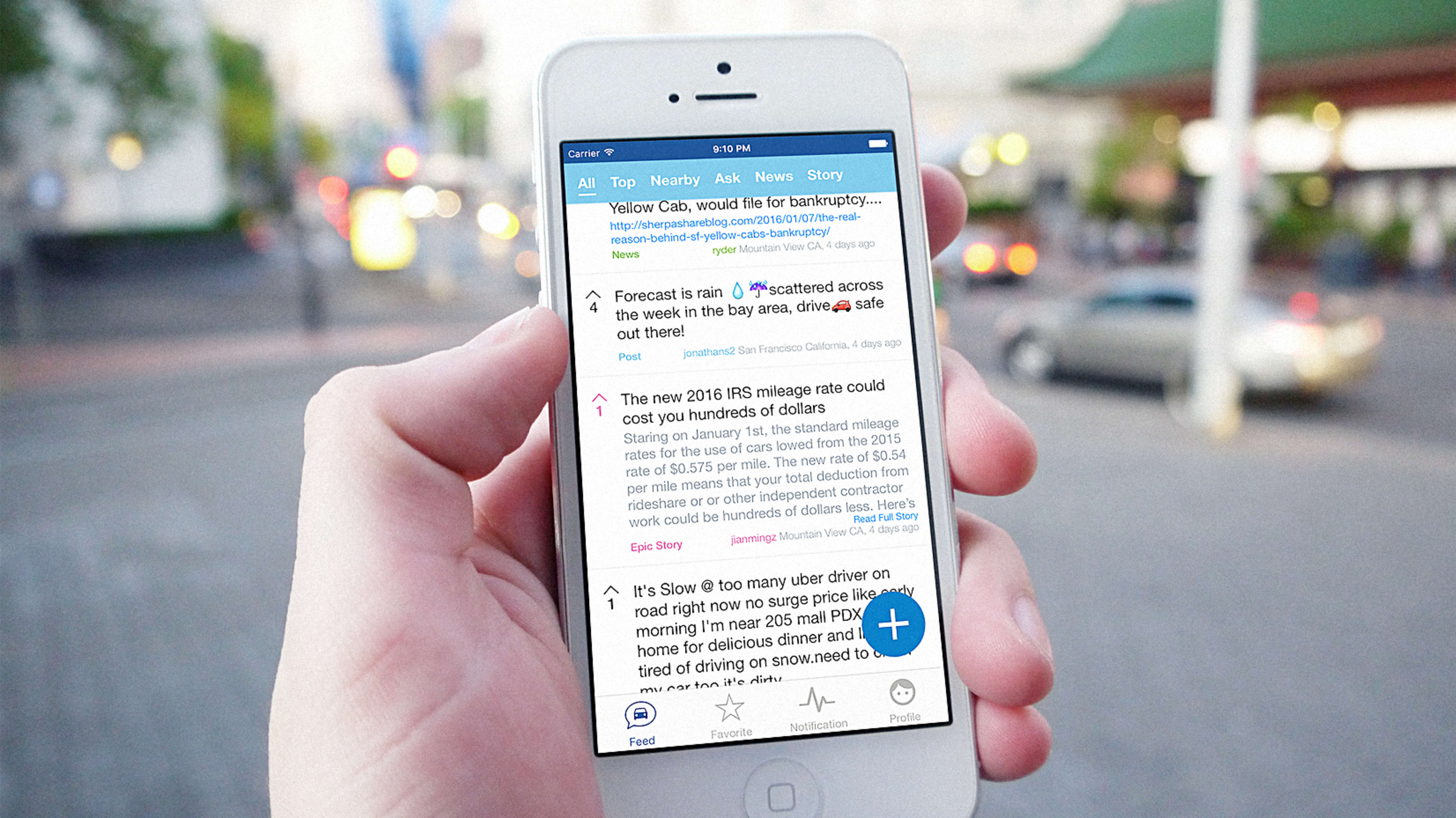Drivers for on-demand services like Uber and Lyft have no easy way to find their coworkers, but a new app called Pulse aims to change that.
The app is a forum for on-demand drivers who want to talk with other nearby on-demand drivers. Some drivers on the app have used it to talk shop: “Anyone else noticed the surge is not going above 2.9 in Charlotte,” asked one driver. Others have asked for advice: “So I have a question as a new driver on the road,” one driver wrote. “How can I use Google maps while hearing the navigation voice?” Or warned other drivers about traffic: “Be advised,” reads one post, “Fire department activity on West 47th street.”
Uber and Lyft drivers aren’t staff employees, so training their drivers or providing them with too much guidance about how to do their jobs could suggest the companies have misclassified them as independent contractors. The companies also don’t include features that allow drivers to communicate with each other, so there’s not an easy way for them to learn from their peers. Pulse bridges both gaps.
“In a traditional office you would have shared office space, you can have lunch together, you can meet by the watercooler,” says Ryder Pearce, the cofounder of the company that created the app, called SherpaShare. “Driving is very fragmented. It’s very tough to find the existing driver.”

Since 2014, SherpaShare has operated a free app that helps on-demand drivers track their mileage and earnings. Pearce says the startup built Pulse after a chat feature in that original app became popular among its more than 50,000 users. Drivers posted several thousand posts per week—everything from stories about odd riders to news posts about Uber—and usage of the feature grew 150% month over month. By creating a separate app, Pearce says he hopes even casual drivers, who may not be interested in tracking their mileage or earnings, will still join the community.
Uber or Lyft, of course, could easily add such a feature to their own apps, especially to encourage drivers to train each other. But facilitating communication between drivers could also empower the drivers in a way that threatens the auto-sharing companies.
When you can’t see your coworkers or even figure out who they are, it’s very difficult to organize them to petition for better rates or more benefits. Uber drivers have attempted to organize several strikes against Uber (which essentially sees them as a stop-gap technology), but thus far they have failed to cause any disruption in service.
“We never use the union word,” Pearce says, “but if a driver were to try to mobilize on our platform, that would be up to them.”
Recognize your brand’s excellence by applying to this year’s Brands That Matter Awards before the early-rate deadline, May 3.
